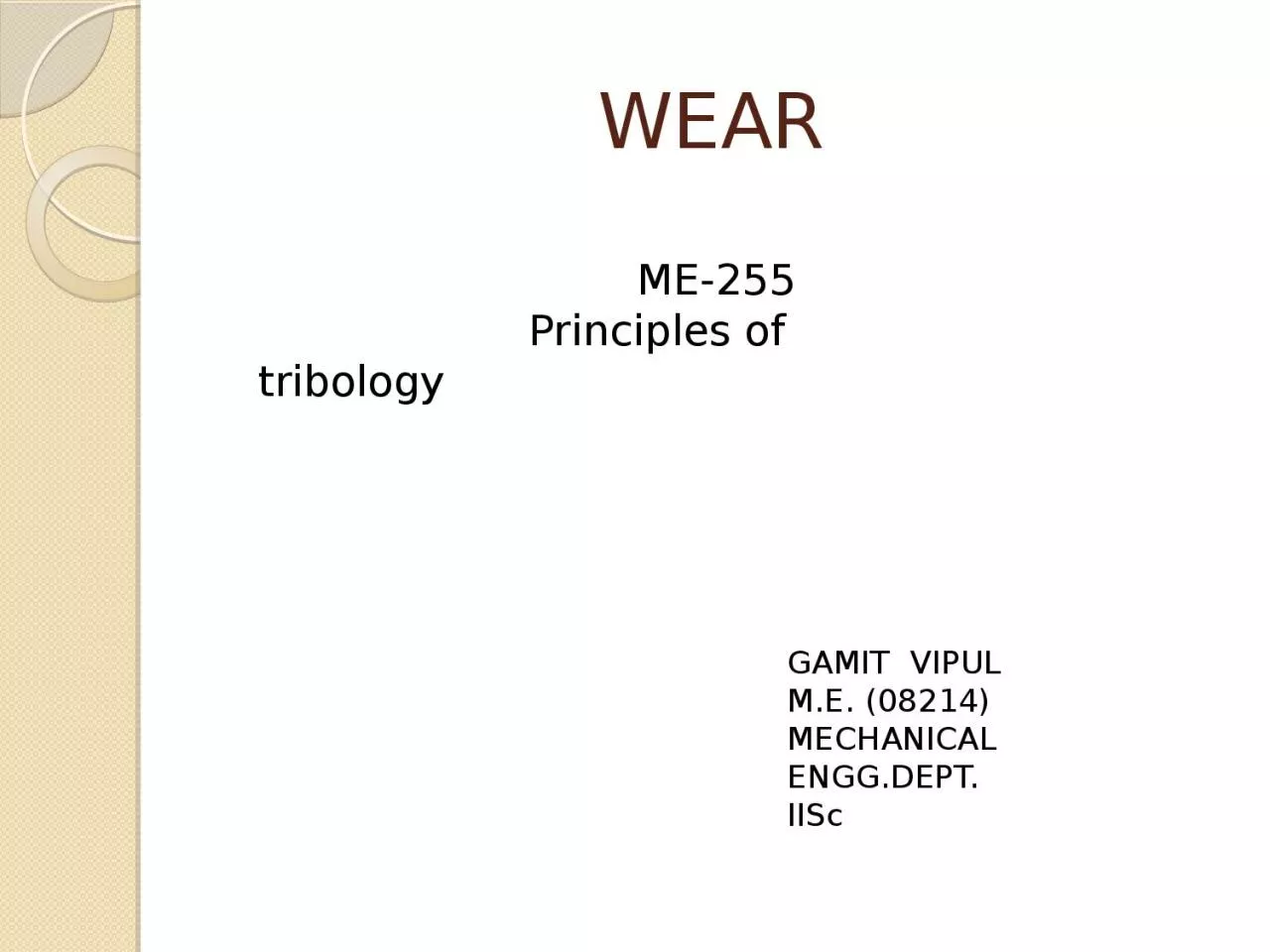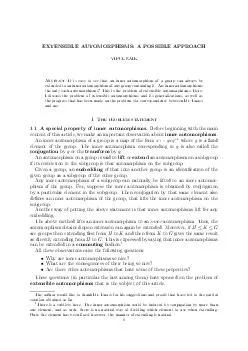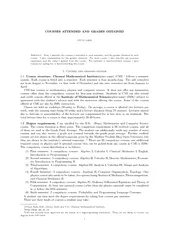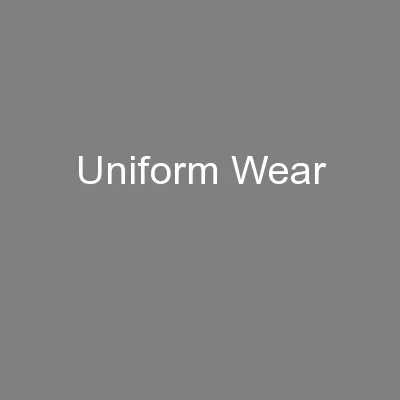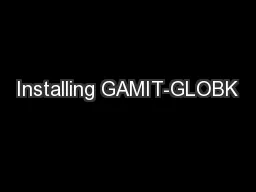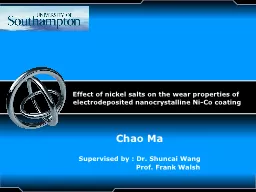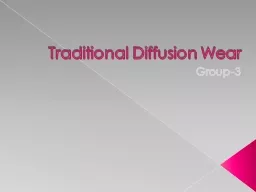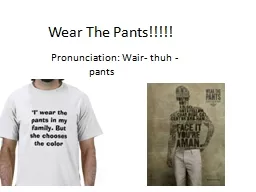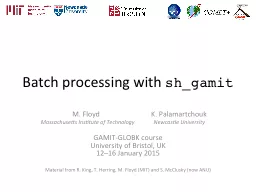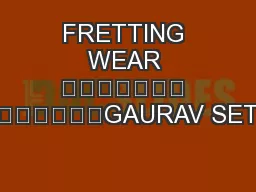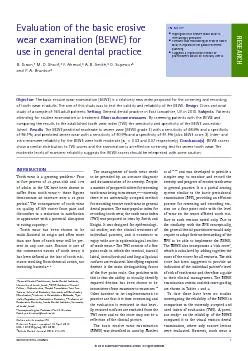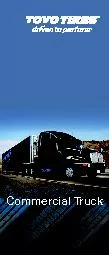PPT-WEAR GAMIT VIPUL
Author : brianna | Published Date : 2022-06-18
ME 08214 MECHANICAL ENGGDEPT IISc ME255 Principles of tribology Wear Wear is a process of removal of material from one or both of two solid surfaces in
Presentation Embed Code
Download Presentation
Download Presentation The PPT/PDF document "WEAR GAMIT VIPUL" is the property of its rightful owner. Permission is granted to download and print the materials on this website for personal, non-commercial use only, and to display it on your personal computer provided you do not modify the materials and that you retain all copyright notices contained in the materials. By downloading content from our website, you accept the terms of this agreement.
WEAR GAMIT VIPUL: Transcript
Download Rules Of Document
"WEAR GAMIT VIPUL"The content belongs to its owner. You may download and print it for personal use, without modification, and keep all copyright notices. By downloading, you agree to these terms.
Related Documents

